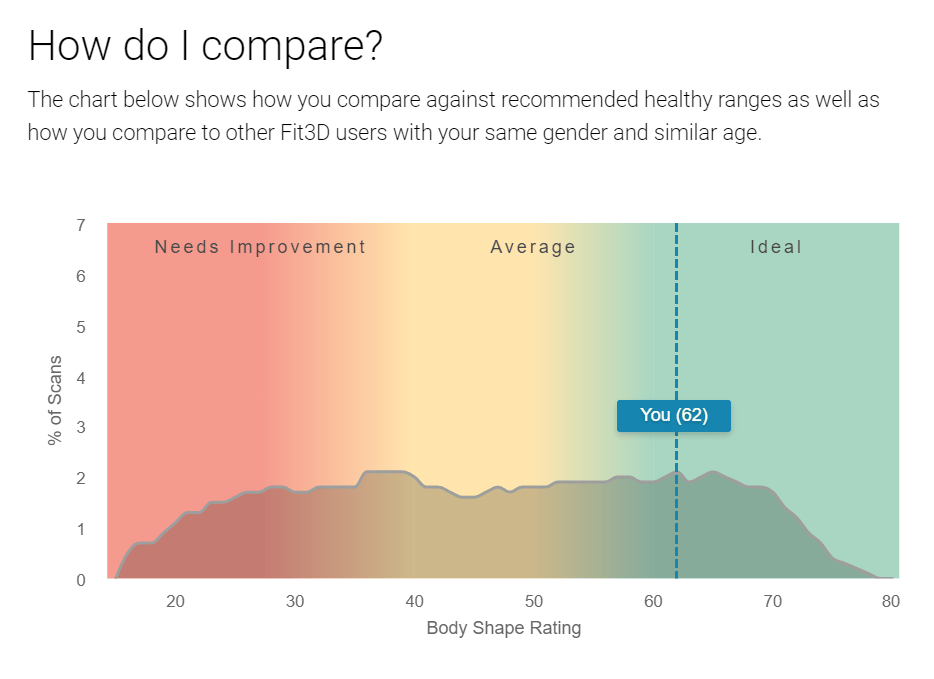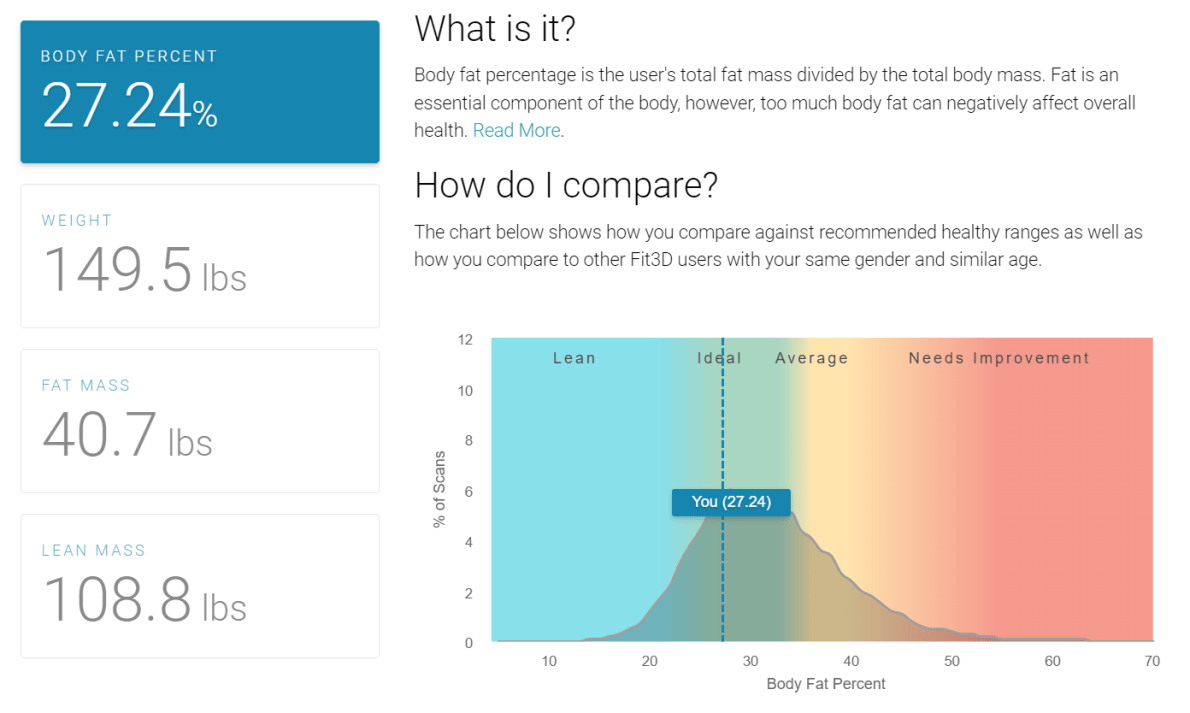In this blog, the MSP team reviews what happens when you take a Fit3D Scan, what makes it more reliable and accurate compared to its competitors, and why the information is important to your fitness goals.
What is a Fit3D Scan?
The Fit3D scanner is easy to use and a fantastic way to track fitness progress over time.
At your Fit3D Scan appointment, your MSP Coach will walk you through instructions for the scan. The scan will have a quick intake process to pair your information to the database so that it can provide accurate information based on your age, weight, and height. This is important because your scan results will help you understand how you compare to other people that are similar to you!
The scan takes about 30 seconds. You’ll step on the plate, click the buttons on the handles, and the machine will rotate you 400 degrees (a little over a full turn). While the scanner rotates you, it will take over 1200 images and start processing your biometric data for the most accurate wellness readings, measurements, and metrics.
Measurements
Once the scan is complete, the Fit3D machine will run a series of metrics from your chin, shoulders, elbows, wrists, hips, knees, and ankle measurements. The software will take the points as well as your biceps, waist, forearms, thighs, chest, and calves, measurements to form a 3D image. These measurements will be featured in the user’s scan report where they can compare and track each body part’s measurements from scan to scan to track progress.
Wellness Assessments
Fit3D’s wellness measurements and algorithms were designed in collaboration with many prestigious institutions including Mount Sinai, UCSF, LSU, Harvard Medical, and many others. Through these research partnerships with public and private institutions, Fit3D has scanned thousands of people with Fit3D and DXA systems side by side. Fit3D has subsequently created algorithms that utilize measurements from these body scans to calculate a user’s body fat percentage and other biometric result sets.
The two most popular and regularly tracked metrics at MSP are the Body Shape Rating and body composition measurements.
The Body Shape Rating is a wellness score based on the relationship of your body shape to cardiovascular-related risk factors. It answers the question: Is my body shape making it more likely for me to potentially develop certain cardiovascular-related health issues? BSR is in a 0-100 range where 50 is average and the higher the score the lower the risk. Here is an example of what a female’s Body Shape Rating might look like:

The body composition metrics include body fat percentage, weight, fat mass, and lean mass. Body fat percentage is the user’s total fat mass divided by the total body mass. Fat is an essential component of the body and is necessary to maintain life and reproductive functions; however, too much body fat can negatively affect overall health or hormone levels. It also serves as an indicator of serious health problems that can potentially be faced in the future. The essential body fat (fat that is required to maintain life functions) is generally 10-13% for women and 2-5% for men.
Here is an example of how the Fit3D’s body composition metrics present for a female on a report:

Are these wellness measurements accurate?
Fit3D has a dataset of over 10,000 subjects who have participated in Fit3d scans and DEXA scans. This is significant because the majority of other body composition scanners and research will use less than 100 subjects to build their algorithms. Another thing that makes Fit3D stand out is their honesty about their product, they know that body composition algorithms are not perfect but they are as accurate as possible and the scans are still an accurate and consistent way to measure progress over time.
Why is this information important?
A 3D body scan is a great tool that provides users a resource to consistently track progress to take the guesswork out of their health and wellness goals. The first scan gives you a baseline starting point and future scans can track progress towards body composition and other fitness goals.
Is this information accurate?
When it comes to body fat percentage and biometric data calculations, it is important to note that some methods are more accurate than others, but none of them are perfect!! All methods use assumptions, imperfect estimations, and data calculations. The method you choose is less important than being consistent with it and always using that method in the exact same way, every time. The Fit3D Scan is imperfect, but it is a fantastic, commercial-grade option and it WILL help you track your progress over time, which is it’s real value to our community and members.
Ways to Improve
You can decrease your body fat percentage through a balanced approach of nutrition, behavior change, and exercise. If you don’t have a goal-based fitness strategy, book your free intro here!